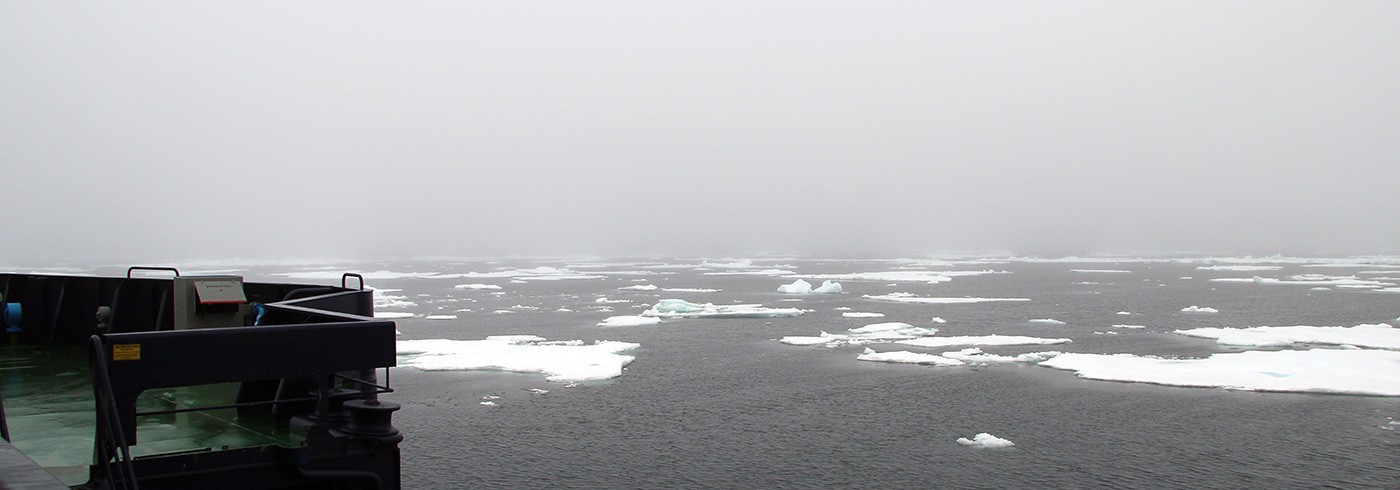The expedition was carried out by the Norwegian University of Science and Technology (NTNU) in collaboration with the Swedish Polar Research Secretariat. Two similar expeditions was carried out in 2012 and 2013.
OATRC 2015 was a project associated with Sustainable Arctic Marine and Coastal Technology (SAMCoT), which is a centre for research-based innovation, initiated by the Research Council of Norway and hosted by NTNU.
Research
The main scientific scope of the research expedition was:
- Collection of full-scale data necessary to build, calibrate and validate models for floaters in ice.
- Collection of full-scale data necessary to build, calibrate and validate models for Ice Management operations.
- Collection of data relevant for health, safety and environmental research.
Chief Scientist
Sveinung Løset
Norwegian University of Science and Technology (NTNU)
Swedish research projects
Investigation of exposure to whole body vibration for icebreaker crew
Whole body vibration denotes that the entire body is exposed to vibrations. Studies show that the risk for pain in the lower back is doubled when people are exposed to whole body vibrations.
Few investigations have been conducted regarding exposure to whole body vibration for icebreaker crews. Previous studies have focused on other types of vessels, not icebreakers. The main purpose of the study was to measure level of exposure to whole body vibrations for icebreaker crew during Arctic icebreaking conditions. The levels of exposure will be compared to levels of acceptance as published by the Swedish Work Environment Authority and international standards.
Depending on the results of the measurements, researchers may also investigate whether problems with the lower back are more common among icebreaker crews.
Principal investigator
Olof Johannesson
Swedish Maritime Administration
Sea ice measurements
The project was a test of the ability to use an ice radar to make continuous measurements of sea ice thickness from the icebreaker Oden. Different antenna types and different frequency ranges was tested and the software was adapted for use on a ship. An intermediate goal was to be able to read the measurements in real-time. The radar system has previously been used for snow and ice measurements in Antarctica and in Swedish fells.
Principal investigator
Per Holmlund
Department of Physical Geography, Stockholm University
Oceanography
The researchers used CTD (Conductivity, Temperature, Depth), an oceanography instrument used to determine the salinity, temperature, and depth of the ocean, to quantify the water masses in a transect going from the shallow shelf out into deeper waters and through the ice front.
Water samples was also collected to answer these questions:
- Can the differences in phytoplankton and bacterial communities found in a transect towards the ice front be explained by changes in physical/hydrographical factors?
- Does the ice and its microflora , direct or indirect, influence the plankton communities through shading or seeding the water with organisms and organic matter?
The data will add to other chemical, biological, and physical data to give a better understanding of the biological functions at the ice edges, which are important for understanding of production, biodiversity and carbon circulation in Arctic waters.
Principal investigators
Anna Wåhlin
Department of Marine Sciences, University of Gothenburg
Sten Åke Wängberg
Department of Marine Sciences, University of Gothenburg
Brash ice studies
During the expedition researchers measured ice thickness and porosity of brash ice. Broken ice was collected and analysed. Data will be used in models where ship resistance to broken ice is of interest.
Principal investigator
Lennart Fransson
Department of Civil, Environmental and Natural resources engineering, Luleå University of Technology
Ice monitoring with Synthetic Aperture Radar (SAR)
The researchers retrieved SAR data from Sentinel-1 and a number of other satellites during the expedition. The images was processed in near-real-time to create products of ice drift and ice convergence/divergence.
Principal investigator
Leif Eriksson
Department of Earth and Space Sciences, Chalmers University of Technology

